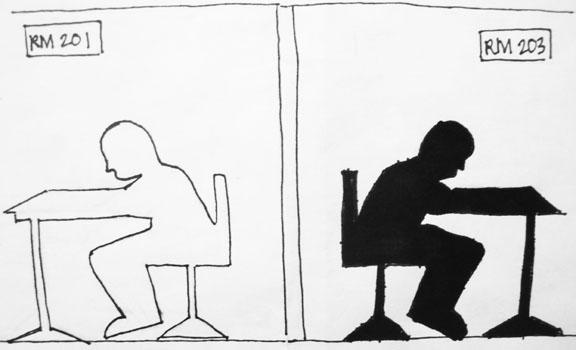Going Back to the ’60s: Fighting Segregation in Schools
July 23, 2011

Published: February 16, 2011
Segregation in schools is not something we usually think of as a modern issue. We may have heard in one class or another that there are big disparities in test scores for people of different ethnicities, but statistics fail to arouse emotions. Now, a Pennsylvania high school is attempting to address the achievement gap by proposing segregation during homeroom. The controversy raises issues that are more profound than the particular policy itself.
The school found that only 30 percent of African-American students scored “proficient” or “advanced” on their reading exam—just half as many as among Caucasians. Employment statistics are equally unsettling. The youth unemployment rate (ages 16 to 19) for African-Americans is at 45.4 percent, about double what it is for Caucasians. The unemployment rate remains double among older age groups. As no progress seems to be made on that front, new ideas are called for.
To combat the educational gap, the Pennsylvania school wants African-American students to have an instructor of the same race and gender for homeroom, which meets six minutes per day and two times a month for 20 minutes. School officials argue that research backs up initiatives like this. Students do learn more when they are taught by an instructor of the same race and gender. I’m not disputing that research, but I do wonder just how much can be accomplished in six minutes. This seems like one of those diet or exercise programs that promises fantastic results with no real effort.
More importantly, however, we now have to ask ourselves just what the purpose of public school is. Do we limit it to learning of facts, assessed with standardized tests, or do we include learning how to live in a diverse culture? These goals may at times be in direct conflict with each other. Research finds, for example, that girls in single-sex schools outperform girls at co-ed institutions. Therefore, if academic achievement were our only goal, we may want to aim for racial and gender segregation. But is this really appropriate for 21st century education—even if we didn’t face legal obstacles? (The Supreme Court called separate schools inherently unequal in its 1954 Brown v. Board of Education ruling.) Or do we think an integrated education leads to better outcomes, even if test scores suffer?
While this particular school in Pennsylvania proposed segregation for a few minutes out of the day, many other schools are virtually segregated entirely. The Civil Rights Project at UCLA published a report looking, among other things, at patterns of segregation. They found that about 40 percent of African-Americans and Latinos are in schools where 90 to 100 percent of students are minorities—compared to less than one percent of white students. This figure is about seven percent higher than it was in 1988, indicating that segregation is increasing rather than decreasing. Along with racial segregation comes economic segregation, as African-Americans and Latinos are in classes with almost twice as many low-income students as are white students.
Going forward, we may have to refocus our attention on racial and economic inequality and their effects on education. Finally, we need a better understanding of mechanisms in education. Even if students in the segregated homeroom in Pennsylvania end up doing better, it’s hard to say whether that was caused by racial or gender segregation, or merely by the increased attention they got from a teacher during those hours. Unless we know just why something works, it will be very hard to replicate elsewhere. We also have to think about just what it is we want to measure. Test scores alone don’t seem to capture the full picture, but how can we assess something like social skills in a multicultural environment? No matter what future research reveals, the issue is bound to remain controversial.









